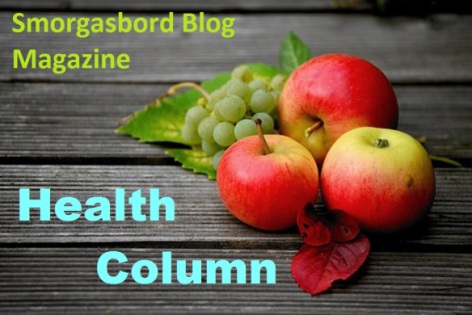
One of the common health complaints that would be noted on the questionnaire that I asked clients to complete when they came to see me, was chronic shoulder pain. Then when I was 52 years old I developed the same problem in my right shoulder that lasted 18 months and was very difficult to manage. I did go to the doctor who told me that I had obviously strained a muscle and to rest it and take painkillers. Not something I was keen on. So I decided to find out other treatments. I discovered that both man and women were suffering the same pain around the same age. It could not be a coincidence.
Why do so many people in their 50s suffer from a frozen shoulder?
A frozen shoulder (adhesive capsulitis) can occur in adulthood and the simplest explanation is that it is the result of wear and tear. It usually effects the shoulder of the dominant hand and arm which makes sense particularly if you are a sportsman, regularly use heavy machinery or over exercise with weights.
However, if you suddenly begin to suffer from pain in your shoulder and upper arm in your early to mid fifties there might also be a number of other factors involved.
Usually the pain will continue for six months and sometimes even up to 18 months or two years. Whilst I am going to look at why it is likely to happen in the first place it is also interesting to note, that like many symptoms associated with both male and female menopause, a frozen shoulder usually recovers naturally, as the body re-balances itself in the two years following the reduction in hormones.
There are some other conditions that might have a link the condition. For example up to 20% of diabetics will suffer from a frozen shoulder at some point. Other diseases include Parkinson’s disease and heart problems. This why it is very important that you do have the pain investigated by your GP to rule out the possibility of a more serious condition.
Hormones and Collagen
Between the ages of 45 to 55 there is a natural reduction in the hormone oestrogen in women and testosterone in men. Both these hormones are involved in the production of collagen which is a major component of our skin. Obviously, the first thing we will notice is that we begin to have a few more wrinkles and our skin tone will thicken slightly. However, collagen is also the main component of ligaments and other soft tissues associated with our joints including the shoulder. Collagen production slows down from around 35 years onwards and as hormone levels also decrease there will also be a loss of tensile strength in the soft tissue causing instability in the joints.
Ligaments comprise two types of collagen. 90% Type 1 collagen which is very strong and takes around three months to form, 9% Type 2 collagen which is maturing into type 1 and 1% fibroblast cells which produce the collagen in the first place.
This is an ongoing process as with other cell renewal in the body but if some of the essential nutrients required for the process decrease or are eliminated you will experience an overall reduction in collagen, particularly Type 1 which is the strongest and keeps the joint stable.
Collagen is also the main component of two other connective materials. Tendons that connect with muscles to move our bones and Fasciae which connects muscle to muscle.
So as you can see if all three of these collagen based connective tissues are not being maintained there will be compromised joint movement.
(There is no actual evidence to suggest that supplements containing collagen or skincare containing it actually work – any good moisturiser will help keep your skin supple but it is more important to include the essential ingredients in your diet to take care of the soft tissues internally that we cannot see.)
Oestrogen
The three most influencing forms of oestrogen in the female body are: Oestrone, oestradiol and oestriol with oestradiol being the one that decreases the most after menopause. Women also produce amounts of testosterone but following the menopause serum levels of this have also declined.
There are two interesting points about this – not only are both of these hormones involved in the production of collagen but also cause an overall rise in LDL (low density lipoprotein) and V-LDL (very low density lipoprotein) cholesterol. With a corresponding decline in HDL (high density lipoprotein) considered to be the healthier of the three. This is significant when I move onto Synovial fluid later in the article.
The second point is that with oestrogen deficiency there is an acceleration in the reduction of bone density with an estimated 3% bone loss per year for about five years dropping to 1% every year after that. The progression can be seen in this photograph.
 Combine loss in collagen strength of the connective tissues attached to porus bone structures and you have increasingly unstable joints such as the shoulder but also knees and hips.
Combine loss in collagen strength of the connective tissues attached to porus bone structures and you have increasingly unstable joints such as the shoulder but also knees and hips.
Testosterone
Men obviously have much higher levels of testosterone which is why they have different skin thickness and texture, facial hair etc. But testosterone is also important in stimulating the fibroblast cells to produce collagen. As testosterone declines this will of course result in connective tissue reducing in strength.
Although these hormones do decline they do not disappear completely and it is important that dietary components of all hormones should be considered an essential part of our diet over 40 to ensure that levels are maintained enough to continue to stimulate the replacement of collagen.
What provides the ingredients for hormones?
All hormones require Amino Acids for their production. Amino acids are the building blocks that make up protein, which of course is what we are made of. Vitamins and minerals can’t perform their specific functions effectively if the necessary amino acids are not present.
The Role of Amino Acids in the body
Amino acids help make neurotransmitters, the chemicals that convey messages in the brain and also hormones like insulin. They are needed for the production of enzymes that activate certain functions within the body and certain types of body fluid and they are essential for the repair and maintenance of organs, glands, muscles, tendons, ligaments, skin, hair and nails.
The second very important ingredient to help our bodies maintain healthy hormone levels are Essential Fatty Acids (EFAs) which are necessary fats that humans cannot synthesise and must be obtained through diet. There are two families of EFAs Omega-3 and Omega-6. Omega-9 is necessary but non-essential as it can be made by the body if the other two fatty acids are present.
The third vital ingredient is the demonic Cholesterol – if you strip away all the faffing about by some scientific researchers, various food lobbies and fad diet proponents over the last 30 years, you will come back to the fact that the body needs fats. Cholesterol is composed of various types, some prone to free radical damage which is the result of poor diet and lifestyle and therefore potentially dangerous, but each type actually has a function in the body and I go into that in more detail in the posts which I have linked too.
Basically, eating healthy fats in your diet moderately, is essential – the right fat in natural, unprocessed foods including olive oil, oily fish, proteins, and dairy.
Physical causes for a frozen shoulder.
It is no coincidence that the frozen shoulder is usually on the side of our dominant hand. Make a note of your daily activities and identify if there is one activity in particular that stands out as being repetitive.. This could be texting, driving, playing an energetic game such as squash or tennis, walking the dog and holding the lead with your dominant hand (probably one of the contributory factors to my own frozen shoulder).
If you can change to your other side for those activities then do so, and if not then I suggest that you at least build in rest periods regularly during the day. Later in the post I have a video showing some simple exercises that might help.
Vitamin D
Although called a vitamin -Vitamin D is actually what is called a prohormone produced primarily by an interaction with sunlight and 7-dehydrocholesterol in the skin. Molecularly it is more closely aligned with the other hormones that I have already mentioned eg. Estradiol.
The problem is that in the last 20 years we have been recommended to either stay out of the sun or cover ourselves with heavy factor sun-creams. Essential for bone density, hormones and our immune system and brain function, a growing deficiency world wide of this important nutrient is resulting in more cases of rickets in children and other serious diseases. We need around 45 minutes out in sunlight on our forearms and chest area as many days as we can from Spring through to Autumn. Additionally we need to include the few food items that also provide Vitamin D. I have put a link to bone health which outlines the essential ingredients.
Fats v carbohydrate diets.
Over the last 30 years the official advice has been to avoid fats of all kinds with a high carbohydrate diet recommended. The manufacturers have stepped up to the plate and provided us with plenty of artificial alternatives mixed with basically anything that extended shelf life and had a plastic origin. This included trans-fats and dubious sugars that have contributed to increased heart disease and conditions such as diabetes.
This means that those of us in our 50’s and 60’s going into, through and after the menopause may not have consumed as much protein to provide amino acids or healthy fats to maintain our cholesterol or hormone levels.
There are two types of amino acid, essential and non-essential. There are approximately 80 amino acids found in nature but only 20 are necessary for healthy human growth and function. We are made up of protein and we require adequate amounts of amino acids if we are to maintain and repair the very substance that we are made from.
We need to obtain essential amino acids from our diet and our body will produce the nonessential variety on its own if our diet is lacking in the essential type.
Refined sugars and acidic environment in the body.
Apart from the sugars produced from a mainly carbohydrate diet, particularly white carbohydrates, we have also been consuming high levels of refined sugars in the form of processed food which have been more readily available in the last 10 years. Sugars and the additives in food create an acidic environment in the body that results in raised cholesterol levels, diabetes, autoimmune diseases and hormone imbalance. It also contributes to the oxidising of LDL cholesterol which turns it into a harmful rather than beneficial substance in our bloodstream.
Currently there is a push to put everyone over the age of 50 onto Statins for life. This medication is designed to reduce the LDL (oxidised LDL the more harmful type) but actually reduces total cholesterol levels. So added to naturally reducing hormone levels there is the reduction in the basic ingredient needed to make them in the first place.
Long term Statin use data will not be available for at least another 30 years. One of the side effects of this reduction in cholesterol in men and women who do not have elevated levels is a reduction of essential hormones earlier and an increase in connective tissue and joint problems amongst other side effects.
Back to the frozen shoulder
To summarise:-
The decline in hormones oestrogen and testosterone in both men and women will effect the production and maintenance of collagen the main component of soft tissue material such as ligaments, tendons and also our bone density. All of which is likely to make joints unstable. Our hormone production requires certain nutrients and processes within the body.
A restricted diet will limit the amount of amino acids available to the body and it will impact the production of collagen.
Vitamin D is essential for many functions within the body including bone density, immune function and other hormone reliant processes. It is primarily produced by the interaction of direct sunlight on our skin for at least 45 minutes a day. Over the last 20 years we have been told to stay out of the sun or wear high factor sun blocks.
Healthy fats are an essential ingredient for the manufacture of our hormones yet for the last 30 years we have been encouraged to consume a high carbohydrate, low fat diet.
Refined sugars in our diet cause an imbalance in hormones which in turn disrupts their various functions including soft tissue production.
Alternative therapies to help treat the pain of frozen shoulder – Acupuncture
One of the most effective treatments that I have experienced for both my knee problem which is ligament damage, and a frozen shoulder is acupuncture.
Acupuncture is believed to be Chinese in origin, although there is evidence that it might have been used nearly 5000 years ago in India. It is certainly one of the oldest and most respected medical procedures in use in the world. Not only for humans, but also our household pets, farm animals, race horses and exotic animals in zoos are being treated with acupuncture for many different ailments.
There is evidence that suggests that acupuncture has been used for at least 2000 years to treat frozen shoulder and surprisingly the point in the body stimulated by needles to ease the pain of a frozen shoulder is a just below the outside of the knee… Usually treatment can taken up to ten weeks.
You can find out more about acupuncture in my post: https://smorgasbordinvitation.wordpress.com/2018/05/16/smorgasbord-health-column-ancient-healing-therapies-acupuncture/
Exercises to ease a frozen shoulder
Here are some simple exercises that you can do during the day from time to time to ease the pain. Thanks to Upright Health
MEDICAL TREATMENTS FOR FROZEN SHOULDER.
Nonsurgical Treatment
As I mentioned in the beginning most shoulder pain will naturally decrease over a period of 6 to 18 months. Doctors will usually prescribe non-steroidal anti-inflammatories although long term use of these is not good for your general health. Usually aspirin or ibuprofen which do have short and long term side effects.
Cortisone injections directly into the shoulder joint can bring relief but it the problem is associated with the soft tissue surrounding the shoulder then this may not be effective.
Physical therapy does help – there are exercises that can help restore motion to the joint. I found the most effective was a combination of deep massage to the shoulder, joint and upper arm with white Tiger Balm and acupuncture.
Surgical Treatment
If time and the basic treatments do not relief the pain then you may have to discuss surgical options with your doctor. These usually involve manipulating the joint under anesthetic forcing the soft tissue to stretch or even tear. Arthroscopy is a procedure where the soft tissue capsule that surrounds the shoulder joint is cut through to release the tension. Both these procedures may be combined.
You will need physical therapy following the surgery and recovery can take between six weeks and three months.
Nutritional recommendations.
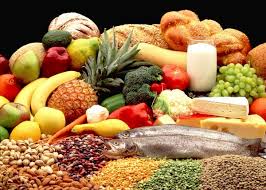
If you have been reading my posts you will know that I advocate a diet comprising any fresh produce you like. Lots of vegetables, lean protein, healthy fats, fruit, fluids and dependent on age varying amounts of wholegrains.
I recommend if possible reducing the consumption of processed pre-prepared foods to about 20% which means that 80% is prepared from scratch.
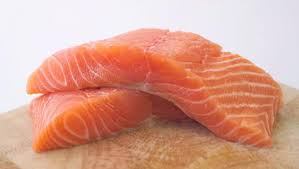
The best food sources of amino acids are dairy products, eggs, fish, meat, soybeans, quinoa, nuts and seeds
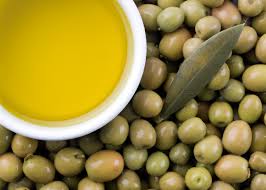
Eat healthy fats in oily fish, grass fed butter, olive oil, coconut oil, avocados, walnuts and almonds.

Take in sufficient vitamin C in vegetables and fruit to improve your soft tissue health and collagen production.
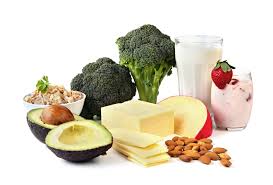
If you live in the northern hemisphere and cannot get consistent exposure to sunshine between May and October, make sure that the foods that contain Vitamin D such as eggs broccoli, strawberries, nuts, avocado, dairy and particular Vitamin D3 in fish oils are part of your diet. This will up your intake of Vitamin E in certain foods which is essential for healthy collagen.
Vitamin D is one of the supplements that I recommend during the winter months that may make a difference to not just your soft tissue health but bones and immune system.
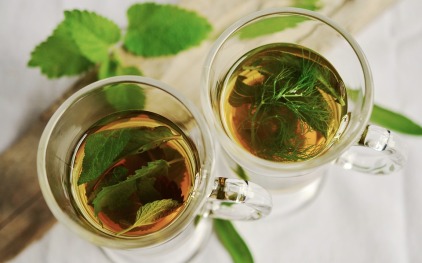
Keep hydrated. As we age are skin becomes dry on the surface but this also applies internally I drink a glass of coconut water every day with green and herbal teas and plenty of water. I find turmeric tea helpful for inflammation and for a reduction in pain and also drink chamomile which is calming and lemon and ginger to boost the immune system.
©sallycronin Just Food for Health 1998 – 2019
A little bit about me nutritionally.

I am a qualified nutritional therapist with twenty years experience working with clients in Ireland and the UK as well as being a health consultant on radio in Spain. Although I write a lot of fiction, I actually wrote my first two books on health, the first one, Size Matters, a weight loss programme 20 years ago, based on my own weight loss of 154lbs. My first clinic was in Ireland, the Cronin Diet Advisory Centre and my second book, Just Food for Health was written as my client’s workbook. Since then I have written a men’s health manual, and anti-aging programme, articles for magazines and posts here on Smorgasbord.

If you would like to browse by health books and fiction you can find them here: https://smorgasbordinvitation.wordpress.com/my-books-and-reviews-2019/
As always delighted to get your feedback and questions. This is not intended to take the place of your doctor’s presence in your life. But, certainly in the UK, where you are allocated ten minutes for a consultation and time is of the essence; going in with some understanding of how your body works and is currently functioning can assist in making a correct diagnosis.
Some doctors believe that a little knowledge is a dangerous thing. However, I believe that understanding our bodies, how it works, how we can help prevent health problems and knowing the language that doctors speak, makes a difference. Taking responsibility for our bodies health is the first step to staying well.
Thank you for dropping in today and I hope you have found useful.. thanks Sally.

Pingback: CarolCooks2…Weekly roundup…Chocolate, Health, Recipes …Week ending 10th Nov 2019… | Retired? No one told me!
I have this issue right now. My shoulder down to the elbow aches, and the wrist feels bruised, though nothing is there! It’s encouraging to read others have the same problem- I’m off to buy some Tiger Balm, thanks, Sally!
LikeLiked by 1 person
I hope that helps Jacqui.. as the wrist is involved it could be RSI.. two things to check – is your chair at the right height for your desk and moving slightly up or down or raising your laptop or computer might help take the strain off the neck and shoulder muscles and also ease the strain on your wrists.. Also if you are watching a wall mounted television it might be too high and be causing neck and shoulder strain.. xxx
LikeLiked by 1 person
Thanks. I think you’re right about the desk/chair situation. It would help if I was taller, I feel like a little kid when I lift the chair to the proper height, lol
LikeLiked by 1 person
I found putting some big books under my monitor made a huge difference.. one of the reasons that I only use my laptop when I am away as that is one unit and not enough flexibility.. I have the opposite problem as I am nearly 6ft tall…♥
LikeLiked by 1 person
Spot on Sally. Two years and two weeks I suffered. And suffer is no exageration, I couldn’t put a jacket or sleeve on, the pain made me physically sick. When I said no thank you, to repeated coiterzone injections, I was cut off from phisio and left without help. I researched myself, changed my diet and altered the way I moved my arm. The old story “hey doctor it hurts when I do this” answer … don’t do it then actually helped. I changed from aerobic exercise, where rotating the arms and wrists at shoulder height accompanied most of the class.
Years later find I have genetic Haemachromatosis, so amongst the rubbish that brought my way ( as you suggest above)
I had been unable to absorb minerals and vitamins. l now have b12 injections and d3 drops and high doses of Q10. I have a balanced fresh diet and have been put on oestrageon. All a bit late, but none-the-less I am helping myself and am just in maintaining as healthy a lifestyle as possible. Moderate excersise and good quality sleep are also factors in improving health. Little and often or as Dad said, a bit of everything does us good.
LikeLiked by 1 person
Absolutely Ellen and so sorry that you had to suffer that for so long. And certainly the stress on joints and ligaments by the iron overload would be contributory. Glad to hear that you are receiving B12 and take D3 which is rapidly becoming deficient in many of us, especially in the Northern hemisphere.. could not go through a winter without supplementing.. I take both B12 and D3 sublingually now which has made a difference. And you sound like you have the diet and exercise right too. I miss my swimming in Spain everyday and hopefully found a pool here that is not overloaded with chlorine and has some quiet times.. I always feel very much better afterwards. x
LikeLike
Sally, one of the most important lessons to learn, I believe, is your own limitations. The exhaustion from the iron brings physical pain throughout, a draining that rest doesn’t alter or relieve. A sedentary life makes this worse, as does over stretching, too much exercise will floor me for weeks. So finding my level has been imperative to coping. Knowing your disease inside out will prepare me for the next thing. A GP only has general knowledge ( if any of the condition) so educating myself is imperative to getting the best help. Your post is spot on absorption of minerals and vitamins and getting them from foods is key.
LikeLiked by 1 person
Thanks Ellen and it would help if they got more than two days nutritional training in the 7 years.. It never ceases to amaze me that they know so little about the fuel the human body needs to be healthy…xx
LikeLike
It is sad. 😕 and, not good enough
LikeLiked by 1 person
Reblogged this on Stevie Turner and commented:
I too had a frozen shoulder in my fifties, although it wasn’t my dominant side. I had a terribly painful cortisone injection directly into the shoulder joint, and this combined with daily shoulder exercises has kept the pain at bay. I can now hold both hands high above my head, but before the injection I could only raise my left arm halfway. Thanks Sally for this useful info. I would never have that injection ever again!
LikeLiked by 1 person
They are dreadful.. they wanted to stick on in my knee and I told them where to stick it (pardon the pun). Glad that you now have good mobility, throwing ones arm in the air in frustration looks a bit odd when only one works!!! hugsx
LikeLiked by 1 person
Lol. I thought I was going to pass out with the pain, but it worked though, combined with daily stretches.
LikeLiked by 1 person
Reblogged this on Retired? No one told me! and commented:
I have a few friends who would find this post really helpful as they suffer from frozen shoulders…As always Sally offers great advice…
LikeLiked by 1 person
Thank you for sharing Carol. hugsxxx
LikeLike
My pleasure Sally 💕 x
LikeLike
Tiger Balm is very popular here and we use it for many things also good for insect bites…But a frozen shoulder I have heard is very painful…Lots of good advice, Sally 🙂 xx
LikeLiked by 1 person
Thanks Carol.. I never travel without it and use white for most things but will bring out the red for really painful joint pain.. I learnt my lesson about washing my hands after using when I inadvertently rubbed my eyes in the early days…. ♥
LikeLike
We have all done that at times.. Or at least once.. ❤️
LikeLiked by 1 person
I’ve had a few issues with this. Thanks, Sally!
LikeLiked by 2 people
Hope some help Angie..hugs
LikeLiked by 1 person
Me too! Thank you!
LikeLiked by 1 person
Thanks for this great info Sal. I wasn’t aware that hormones and collagen depletion could contribute to frozen shoulder, but makes perfect sense. Also, I will add, sitting without good posture on computer can definitely give a sore shoulder – not sure if that falls under frozen shoulder. 🙂 ❤
LikeLiked by 2 people
All connected Debby, a weakened soft tissue structure due to internal changes combined with external factors as you say.. posture and repetitive movements.. ♥♥
LikeLiked by 2 people
That’s why it’s good to be a zombie sometimes 🙂 ❤
LikeLiked by 2 people
Or a pin cushion….♥
LikeLiked by 1 person
LOL ❤
LikeLike
I really adore your health column, Sally! Very informative, with tasks i never noticed before. Thank you very much! Michael
LikeLiked by 2 people
Thank you Michael that is great to hear…hugs
LikeLiked by 1 person
I have had problems with my right shoulder, Sally. The doctor said frozen shoulder but the physio said it was from my computer mouse.
LikeLiked by 2 people
Sounds like a classic frozen shoulder Robbie I used acupuncture in conjunction with wild yam cream to rebalance hormones – but here is a video on acupressure using the same points as acupuncture that you can do yourself. https://www.youtube.com/watch?v=0W4-ZkjkO1c
LikeLiked by 2 people
Thank you, Sally. Appreciated.
LikeLiked by 1 person
I had a frozen shoulder in my early 50’s. Probably brought on when I was digging in my yard. I actually felt a pop. It took about six months to restore full range of motion. I went for physical therapy for three of those months. Now, thankfully, the shoulder is 100%.
LikeLiked by 2 people
That definitely sounds like wear and tear and from a physical cause.. still takes a long time to fix.. glad now 100%. I remember the morning I woke up after nearly 18 months and went through the day realising the pain had gone.. huge relief.
LikeLiked by 1 person
I had frozen shoulder a few years ago – it took a lot of physical therapy and exercising afterward for it to finally get back all of my mobility. thanks for these useful tips.
LikeLiked by 2 people
Surprising how many of us have had the condition..not all the answers but hopefully some. thanks Jim.
LikeLiked by 1 person
Thanks for this load of information, Sally. My husband has shoulder problems and gets Xray-guided cortisone shots. It was satisfying to read that we are already making most of these dietary choices – for a whole bunch of health reasons. And though collagen hasn’t been shown to make a verifiable difference, we do that as well (it makes a difference psychologically, I think). 😀
LikeLiked by 2 people
It is very painful and anything that relieves it is a godsend. I found Tigerbalm massaged in by a willing partner helped and I when I went to a physio he used as well which was encouraging. Night times were the worst, turning over.. xx
LikeLiked by 2 people
I read a post of yours last year about tiger balm and we’ve been using it ever since. (We should have bought stocks in it. Lol.) My hubs will eventually need a shoulder replacement since he’s got a bone-on-bone issue. I hold out hope that when he retires and stops the repetitive physical work (he’s an electrician) some of the pain will ease, but we’ll have to wait and see. Night time IS the worst. Thanks for all your advice. ❤ Hugs.
LikeLiked by 2 people
Great to hear Diana and yes that sort of repetitive injury is tough to fix, some family members are keen sailors and have had to have the problem fixed surgically. x
LikeLiked by 2 people
All very interesting. Thanks, Sally. At 91, Eric swears the sunshine has helped – not that he’s ever been an ‘over-indulger’ or a sun worshipper…and we do try and eat healthily most… of the time. Hugs xx
LikeLiked by 2 people
I am sure Eric is right Joy, you only need 20 minutes a day on your forearms to benefit from the Vitamin D from the sunshine, and I am sure that most of the year you are both getting that..hugsxx
LikeLiked by 1 person